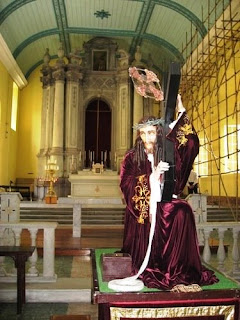
"We Cannot Be Silent About What We Know"
LOURDES, France, SEPT. 15, 2008 (Zenit.org).- Here is a Vatican translation of the discourse Benedict XVI gave Sunday night at the conclusion of the Eucharistic procession in the prairie at the Marian shrine in Lourdes.
* * *
Lord Jesus, You are here!
And you, my brothers, my sisters, my friends,
You are here, with me, in his presence!
Lord, two thousand years ago, you willingly mounted the infamous Cross in order then to rise again and to remain for ever with us, your brothers and sisters.
And you, my brothers, my sisters, my friends, You willingly allow him to embrace you.
We contemplate him.
We adore him.
We love him. We seek to grow in love for him.
We contemplate him who, in the course of his Passover meal, gave his body and blood to his disciples, so as to be with them “always, to the close of the age” (Mt 28:20).
We adore him who is the origin and goal of our faith, him without whom we would not be here this evening, without whom we would not be at all, without whom there would be nothing, absolutely nothing! Him through whom “all things were made” (Jn 1:3), him in whom we were created, for all eternity, him who gave us his own body and blood -- he is here this evening, in our midst, for us to gaze upon.
We love, and we seek to grow in love for him who is here, in our presence, for us to gaze upon, for us perhaps to question, for us to love.
Whether we are walking or nailed to a bed of suffering; whether we are walking in joy or languishing in the wilderness of the soul (cf. Num 21:4): Lord, take us all into your Love; the infinite Love which is eternally the Love of the Father for the Son and the Son for the Father, the Love of the Father and the Son for the Spirit, and the Love of the Spirit for the Father and the Son. The sacred host exposed to our view speaks of this infinite power of Love manifested on the glorious Cross. The sacred host speaks to us of the incredible abasement of the One who made himself poor so as to make us rich in him, the One who accepted the loss of everything so as to win us for his Father. The sacred host is the living, efficacious and real sacrament of the eternal presence of the saviour of mankind to his Church.
My brothers, my sisters, my friends,
Let us accept; may you accept to offer yourselves to him who has given us everything, who came not to judge the world, but to save it (cf. Jn 3:17), accept to recognize in your lives the presence of him who is present here, exposed to our view. Accept to offer him your very lives!
Mary, the holy Virgin, Mary, the Immaculate Conception, accepted, two thousand years ago, to give everything, to offer her body so as to receive the Body of the Creator. Everything came from Christ, even Mary; everything came through Mary, even Christ.
Mary, the holy Virgin, is with us this evening, in the presence of the Body of her Son, one hundred and fifty years after revealing herself to little Bernadette.
Holy Virgin, help us to contemplate, help us to adore, help us to love, to grow in love for him who loved us so much, so as to live eternally with him.
An immense crowd of witnesses is invisibly present beside us, very close to this blessed grotto and in front of this church that the Virgin Mary wanted to be built; the crowd of all those men and women who have contemplated, venerated, adored the real presence of him who gave himself to us even to the last drop of blood; the crowd of all those men and women who have spent hours in adoration of the Most Holy Sacrament of the altar.
This evening, we do not see them, but we hear them saying to us, to every man and to every woman among us: “Come, let the Master call you! He is here! He is calling you (cf. Jn 11:28)! He wants to take your life and join it to his.
Let yourself be embraced by him! Gaze no longer upon your own wounds, gaze upon his. Do not look upon what still separates you from him and from others; look upon the infinite distance that he has abolished by taking your flesh, by mounting the Cross which men had prepared for him, and by letting himself be put to death so as to show you his love. In his wounds, he takes hold of you; in his wounds, he hides you. Do not refuse his Love!”
The immense crowd of witnesses who have allowed themselves to be embraced by his Love, is the crowd of saints in heaven who never cease to intercede for us. They were sinners and they knew it, but they willingly ceased to gaze upon their own wounds and to gaze only upon the wounds of their Lord, so as to discover there the glory of the Cross, to discover there the victory of Life over death. Saint Pierre-Julien Eymard tells us everything when he cries out: “The holy Eucharist is Jesus Christ, past, present and future” ("Sermons and Parochial Instructions after 1856," 4-2.1, “On Meditation”).
Jesus Christ, past, in the historical truth of the evening in the Upper Room, to which every celebration of holy Mass leads us back.
Jesus Christ, present, because he said to us: “Take and eat of this, all of you, this is my body, this is my blood.”
“This is”, in the present, here and now, as in every here and now throughout human history. The real presence, the presence which surpasses our poor lips, our poor hearts, our poor thoughts. The presence offered for us to gaze upon as we do here, this evening, close to the grotto where Mary revealed herself as the Immaculate Conception.
The Eucharist is also Jesus Christ, future, Jesus Christ to come. When we contemplate the sacred host, his glorious transfigured and risen Body, we contemplate what we shall contemplate in eternity, where we shall discover that the whole world has been carried by its Creator during every second of its history. Each time we consume him, but also each time we contemplate him, we proclaim him until he comes again, “donec veniat”. That is why we receive him with infinite respect.
Some of us cannot -- or cannot yet -- receive Him in the Sacrament, but we can contemplate Him with faith and love and express our desire finally to be united with Him. This desire has great value in God’s presence: such people await his return more ardently; they await Jesus Christ who must come again.
When, on the day after her first communion, a friend of Bernadette asked her: “What made you happier: your first communion or the apparitions?”, Bernadette replied, “they are two things that go together, but cannot be compared. I was happy in both” ("Emmanuélite Estrade," 4 June 1958). She made this testimony to the Bishop of Tarbes in regard to her first communion: “Bernadette behaved with immense concentration, with an attention that left nothing to be desired … she appeared profoundly aware of the holy action that was taking place. Everything developed in her in an astonishing way.”
With Pierre-Julien Eymard and Bernadette, we invoke the witness of countless men and women saints who had the greatest love for the holy Eucharist. Nicolas Cabasilas cries out to us this evening: “If Christ dwells within us, what do we need? What do we lack? If we dwell in Christ, what more could we desire? He is our host and our dwelling-place. Happy are we to be his home! What joy to be ourselves the dwelling-place of such an inhabitant!”
Blessed Charles de Foucauld was born in 1858, the very year of the apparitions at Lourdes. Not far from his body, stiffened by death, there lay, like the grain of wheat cast upon the earth, the lunette containing the Blessed Sacrament which Brother Charles adored every day for many a long hour. Father de Foucauld has given us a prayer from the depths of his heart, a prayer addressed to our Father, but one which, with Jesus, we can in all truth make our own in the presence of the sacred host: “‘Father, into your hands I commend my spirit.’ This was the last prayer of our Master, our Beloved … May it also be our own prayer, and not only at our last moment, but at every moment in our lives: Father, I commit myself into your hands; Father, I trust in you; Father, I abandon myself to you; Father, do with me what you will; whatever you may do, I thank you; thank you for everything; I am ready for all, I accept all; I thank you for all. Let only your
will be done in me, Lord, let only your will be done in all your creatures, in all your children, in all those whom your heart loves, I wish no more than this, O Lord. Into your hands I commend my soul; I offer it to you, Lord, with all the love of my heart, for I love you, and so need to give myself in love, to surrender myself into your hands, without reserve, and with boundless confidence, for you are my Father.”
Beloved brothers and sisters, day pilgrims and inhabitants of these valleys, brother Bishops, priests, deacons, men and women religious, all of you who see before you the infinite abasement of the Son of God and the infinite glory of the Resurrection, remain in silent adoration of your Lord, our Master and Lord Jesus Christ. Remain silent, then speak and tell the world: we cannot be silent about what we know. Go and tell the whole world the marvels of God, present at every moment of our lives, in every place on earth. May God bless us and keep us, may he lead us on the path of eternal life, he who is Life, for ever and ever. Amen.





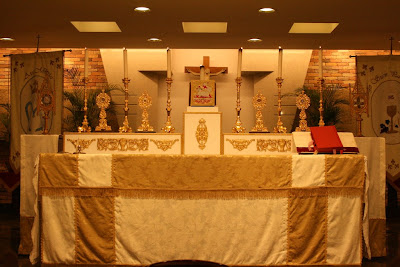



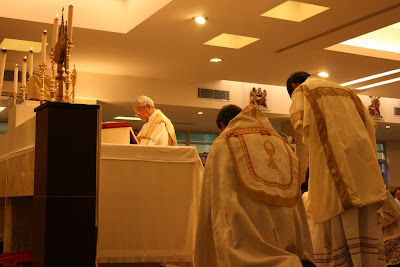


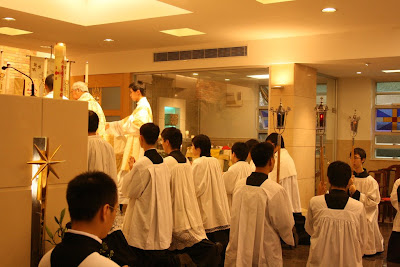



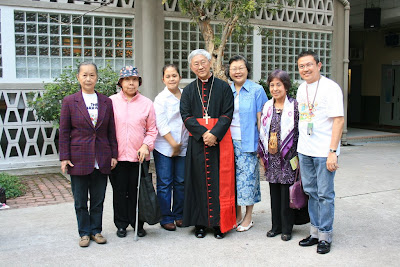


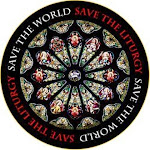


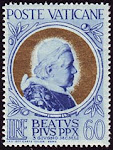



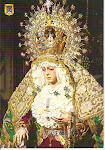


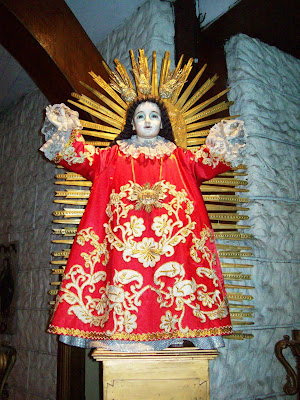.jpg)



